Sicilian people: mule soldiers, proof of virginity and more.
The elderly Sicilians tell us about the habits of the past. In this episode Vendors of broom, mule soldiers, "nonno sa benerica",…
 presents:
presents:
The Arab-Norman architecture
Text by Eliana Calandra
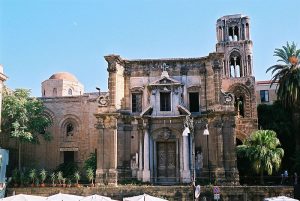
We are in the historical archive of the city of Palermo, and here once was the Arab mosque and later the synagogue of the Jewish community.
After three centuries of Byzantine domination and two centuries of Arab domination, here come the Normans whose kings are literally bewitched by the Arab architecture.
Then somenthing extraordinary happens: the Norman kings summon the Arab architects and together they elaborate a mixture of styles and cultures giving posterity to what today we call Arab-Norman art.
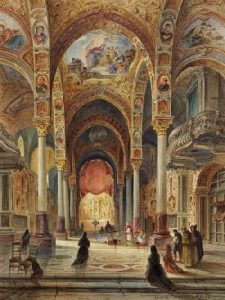
In 2015, Unesco declared the Arab-Norman itinerary of Sicily, a World Heritage Site, and these are the monuments:
In Palermo: the Palatine chapel, the church of Santa Maria dell’Ammiraglio or the Martorana, the Palazzo dei Normanni, the castle of the Zisa, the bridge of the Ammiraglio, the church of San Cataldo and the church of San Giovanni degli Eremiti.
To these are added the cathedral of Monreale and that of Cefalù.
They are among the highest examples of the Arab-Norman style.
In the beautiful Palatine chapel we admire splendid Byzantine mosaics on a gold background, muqarnas vaults and typically Arab domes as well as the geometric designs on lava stone and Romanesque capitals.
The church of San Cataldo with the three domes and the perforated windows with the star motif are clearly of Arabic origin.
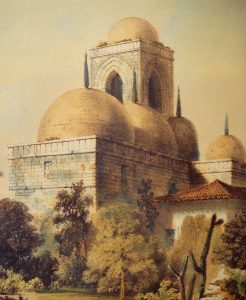
Also the church of San Giovanni degli Eremiti, the symbol of the city, has a clear Arab origin, built on a pre-existing mosque.
And the cathedral of Palermo, a former Christian place of worship, transformed into a mosque by the Arabs in the 9th century and once again in a Christian church by the Normans in the 1100.
Here there are some royal tombs including that of Frederick II of Swabia and the treasure with the jewels and the crown of Constance of Aragon.
The Zisa castle was a summer residence of the sovereigns, a so-called solacia, a place of relaxation, once outside the city walls, with fountains, citrus groves, gardens and fish ponds.
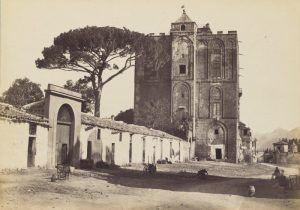
Finally, the Ammiraglio Bridge, which was commissioned by George of Antioch, that brought together three different cultures: Latin, Arab and Greek.
It was built to unite the city with the Genoardo, a luxuriant place beyond the Oreto river.
Finally, the church of Santa Maria dell’ammiraglio built in the 12th century is called della Martorana because in the 1400 was the seat, of a female Benedictine monastery founded by Aloisia Marturano. The nuns made the typical Sicilian sweets with almond paste in the shape of fruits, which are precisely called Martorana fruit.
These and others are the wonders of our splendid Sicily.
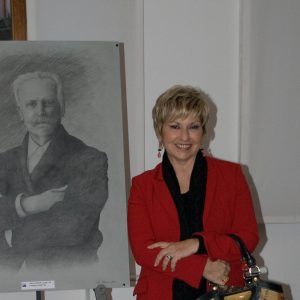
Host by: Eliana Calandra, Cultural Department of Splendid Sicily
Director of the Historical Archives of the Municipality of Palermo, of the Sicilian Ethnographic Museum “Giuseppe Pitré” and of the city library system. Paleographer, ethno-anthropologist, passionate about books and reading, author of many specialist publications. Member commission Sicilian Artisan Foundation project (Madrina of the traditions)
Join our Cultural Department: become a (Splendid) member of Sicily
You have a unique opportunity to support la bella Sicilia.
Contribute to the building of the greatest Cultural Museum of Sicily: you will be ETERNALLY thanked in our video productions and in the related pages.